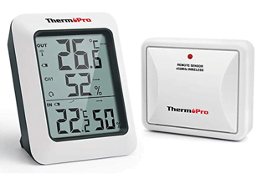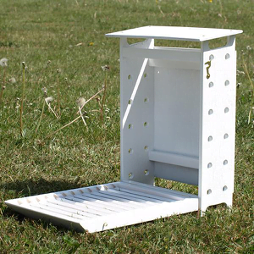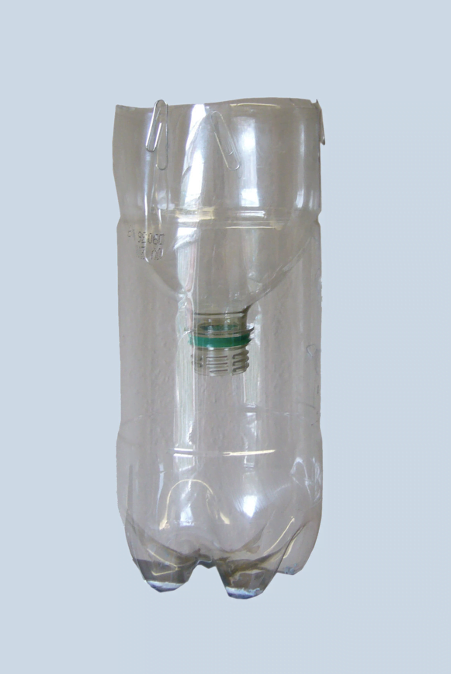
There are two ways to measure temperature and humidity in your garden; either using individual instruments or using a weather station.
Temperature can be measured with a simple glass thermometer (below left, £3-5) filled with alcohol, which expands up a thin tube when the temperature increases. (Older thermometers may use mercury). Use the Celsius (C) scale, and estimate temperature to the nearest degree, or half degree if it is in between.


Digital thermometers (above right, £5) use electronics to measure temperature and are easier to read. The probe at the end of the cable that senses the temperature could be put outside in the shade with the readout in a garage, for example. They usually show temperature to a tenth of a degree, for example 28.9ºC, so enter this number in your report. (NB: When using digital thermometers (or indeed digital instruments of any type) remember that, although the display may have a precision of 0.1°C, its accuracy is likely to be much poorer than that – maybe a degree or two).


Instruments for measuring humidity are known as hygrometers. We will be measuring relative humidity in percent (%). A dial hygrometer (above left, around £10) uses hair, which expands when the atmosphere is moist. An electronic hygrometer uses electronics and has a clear display – devices which read both temperature and humidity are popular. Some of them (above right, £16-20) transmit data from outside sensors to a display indoors.
Humidity can also be measured with a wet and dry bulb hygrometer. This gives a more accurate reading, but involves the use of tables, so is a lot more complicated. Instructions will come with the hygrometer.
All types of thermometer and hygrometer must be kept out of direct sunlight at the time of reading (15:00-16:00) and for half an hour beforehand, either using some form of white louvered screen (below, £90), or by placing it in a position where sunlight doesn’t reach when you are observing, for example sheltered north facing location. As a last resort the thermometer can be hung on a north-facing wall or fence, but stood off as far away from the wall as possible to allow air to circulate all around it.
An Automatic Weather Station (AWS) measures temperature and humidity (and other quantities) with outdoor instruments which radio the data to an indoor display console. They can be bought for as little as £100 (below left), but for better accuracy you will have to pay £300 or more (below, right). They are generally mounted on top of fences or garages, to put them out in the open as much as possible. AWS can be mounted in direct sunlight, but in light winds and strong sunlight the budget versions can be up to 4 degrees in error. Temperature and humidity can be read direct from the indoor display and entered in your report.




